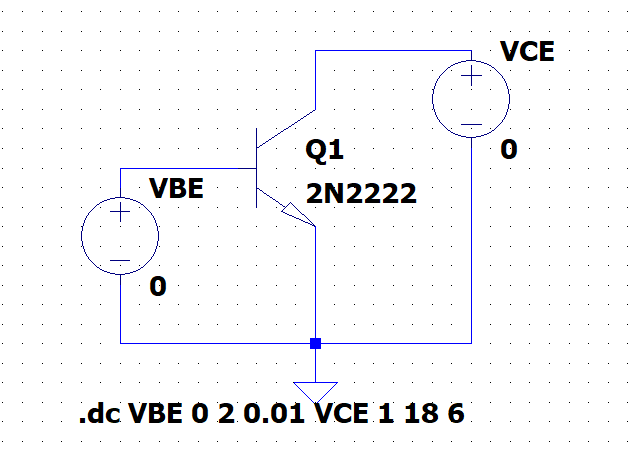You are neglecting power dissipation in this unrealistic test and for your region of concern the transistor would be burning up.
I cannot vouch for the LTspice model accuracy, but from datasheets for 2222A types;
Vce Saturation (Max) = 1V @ 50mA, 500mA which dissipates 500mW which is far too much. Thus, Vce= 7V, 13V, 18V would not be possible in saturation.
Consider the PN2222A Rce is very good ( 1~2 Ohms @ Ic=10 mA) and Rbe you have shown reduces to ~ 17 Ohms.
That makes this hypothetical question a bit irrelevant. Also consider BJT's are Ic vs Vbe (not Ib vs Vce)
ref
https://media.digikey.com/pdf/Data%20Sheets/ON%20Semiconductor%20PDFs/MPS2222%20&%202222A.pdf
From above datasheet the saturation effects you can see for a nominal part Ic=500 mA, Ib=50 , Vce = 200 mV implies Rce=0.2/0.5 = 500 mohms @ 500 mA and 100mV/150mA= 667 mohms .
This causes the hFE to drop faster at high currents and Vce=1.0V due to the Rce effects in saturation, which does not occur at Vce=10 (dashed line plot) since that is not saturated.

You may enjoy reading the wiki page after the comment "This section may be too technical for most readers to understand" or prefer the modern lateral transistor MODELLA paper using voltage controlled conductance or synth [models][2] or the chapter by Dr. Chu with graphs, equations, base-drift, charge-control and the Kirk Effect or the NXP article on NEXTRAM models of vertical devices or the (guess how fast) "World's fastest transistor" and "yet another - 195 page book on - models can be fun"
Or maybe you just prefer the practical history of BJT's.

 As we see for a fixed V_BE, increasing the V_ce will drop the base current.
Qualitatively (no formula used) why this happens?
I say when we increase the V_CE more electrons will be drifted to collector so I_C should go up and I_B is linearly go up as I_C going up since there is a beta coefficient relationship between base and collector currents. Where am I wrong in my reasoning?
As we see for a fixed V_BE, increasing the V_ce will drop the base current.
Qualitatively (no formula used) why this happens?
I say when we increase the V_CE more electrons will be drifted to collector so I_C should go up and I_B is linearly go up as I_C going up since there is a beta coefficient relationship between base and collector currents. Where am I wrong in my reasoning?
